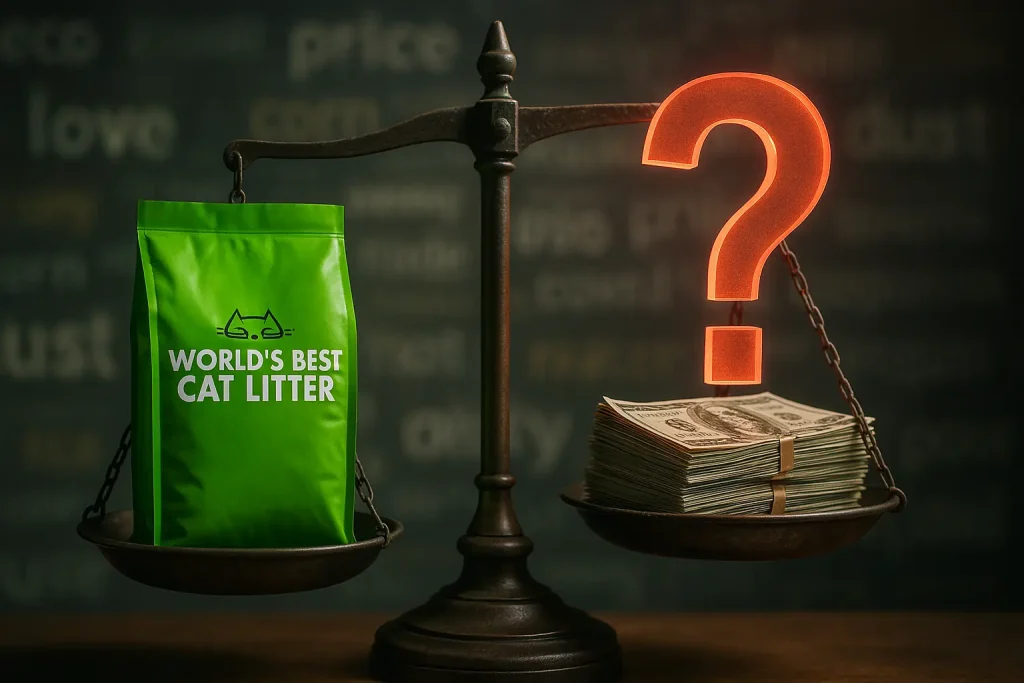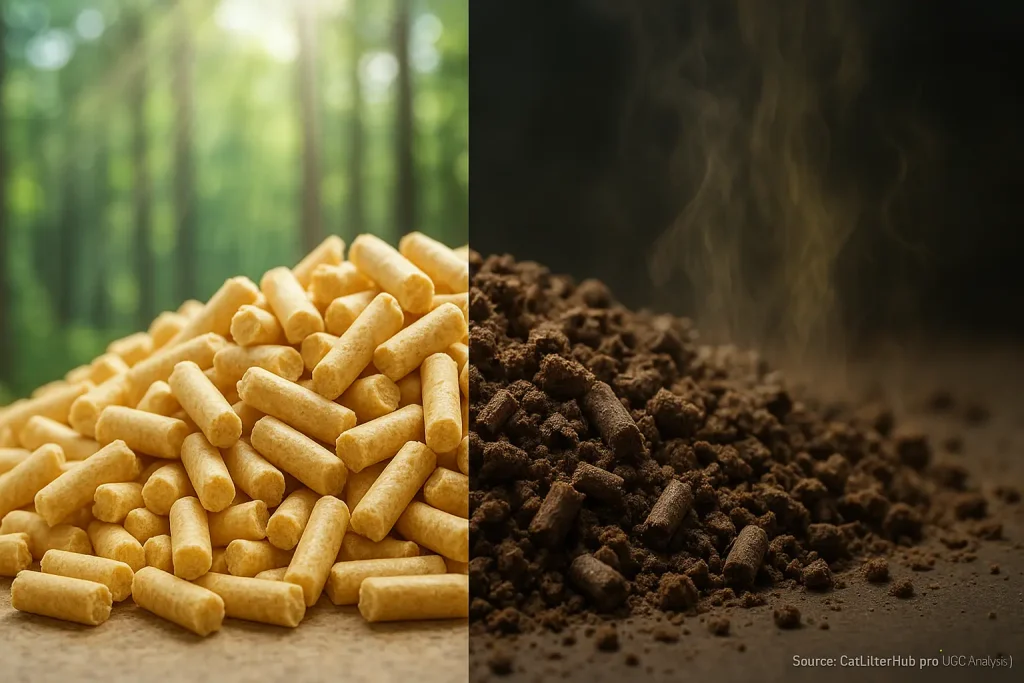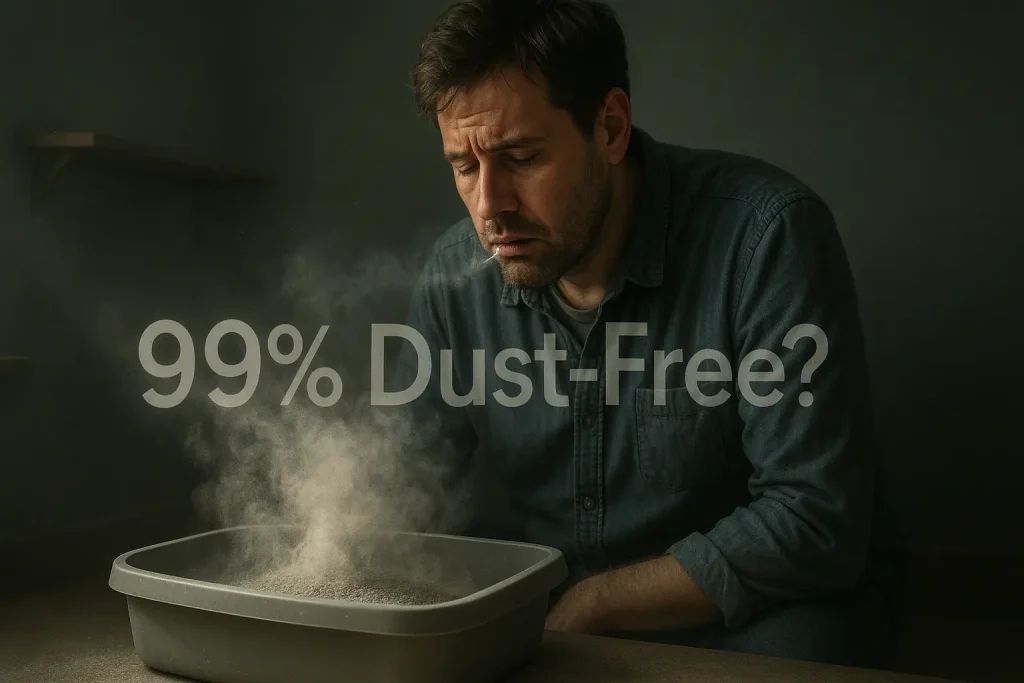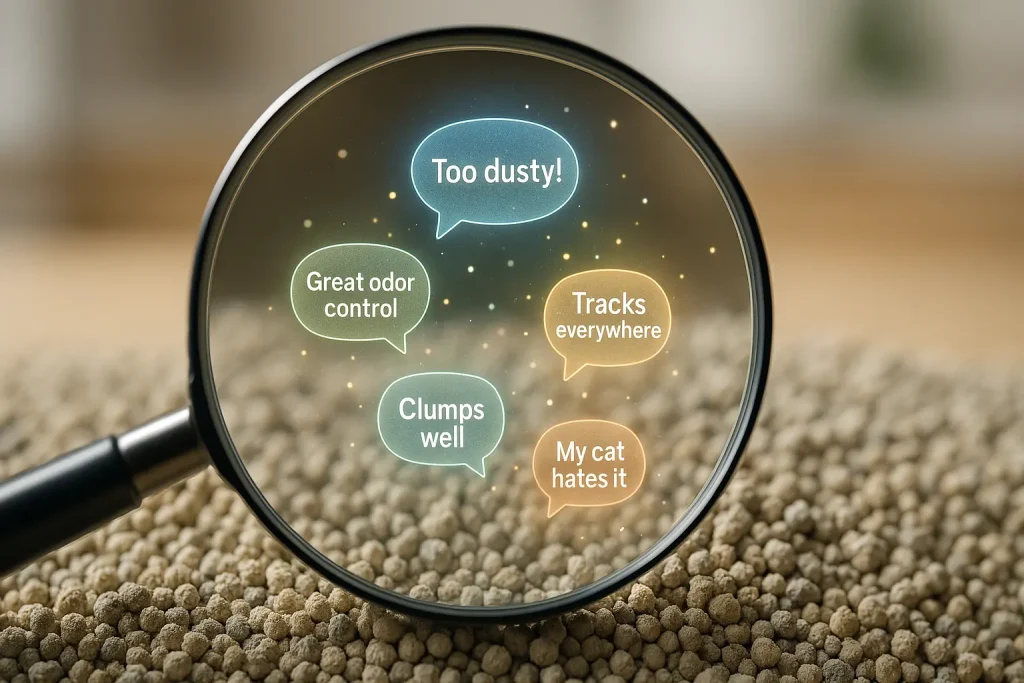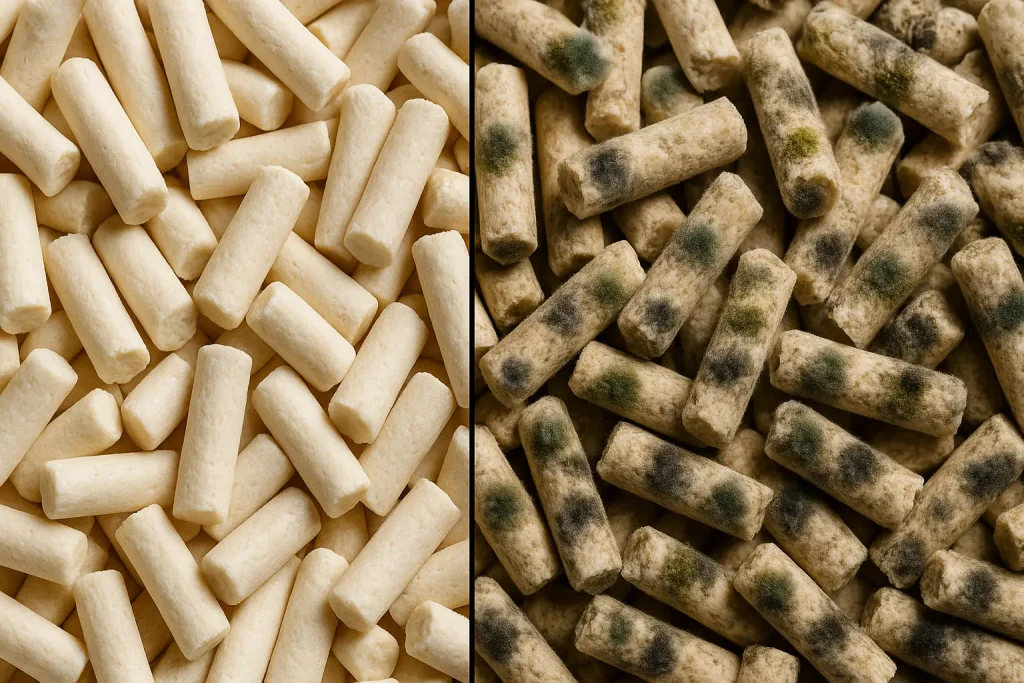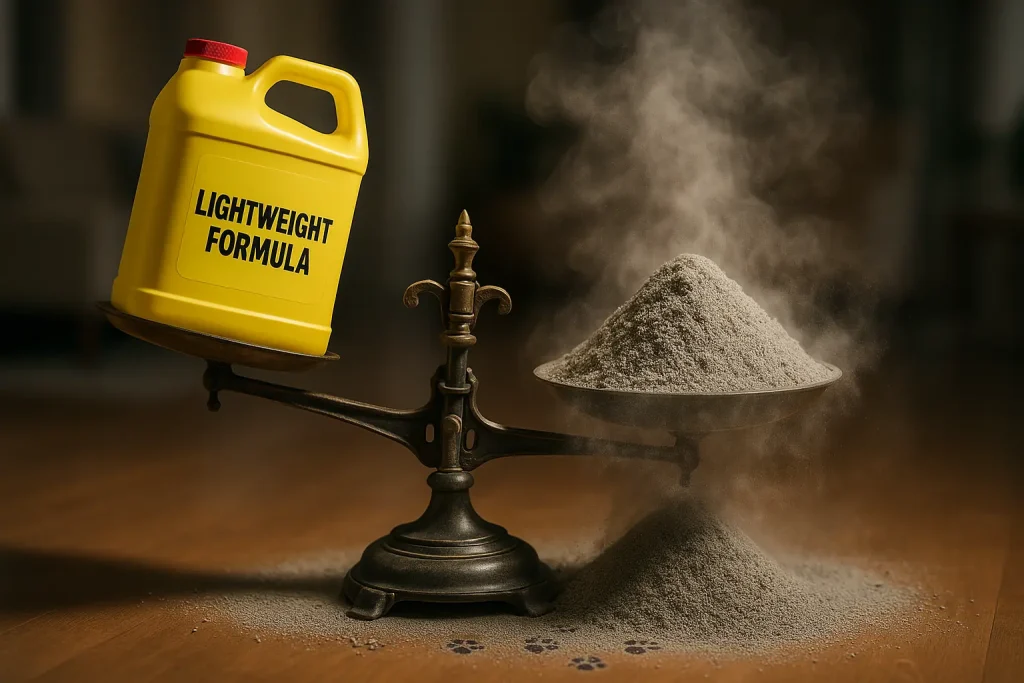The Great Litter Material Debate: What Marketing Hides vs. What Users Reveal
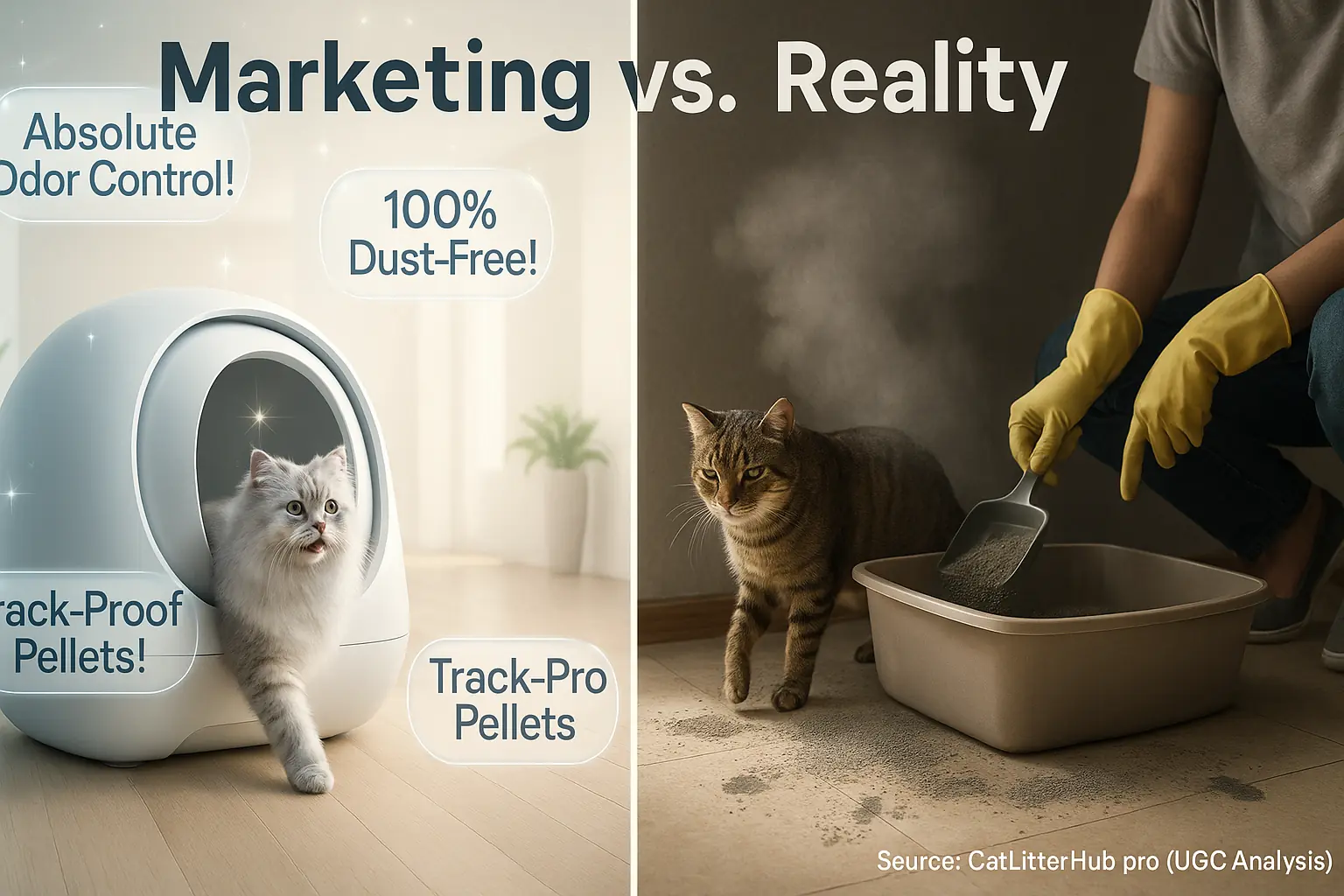
Staring at the litter aisle, feeling overwhelmed? Clay, silica, wood, corn. A dizzying array of promises confronts you. Cat Litter Hub analyzes thousands of reviews. We reveal what actually works for cat owners.
Manufacturers often paint a rosy picture. Their 'odor-lock' claims sound compelling. 'Dust-free' promises tempt many. But what is the actual user experience? Cat Litter Hub investigated thousands of owner reviews. The patterns unearthed? Often surprising. A material's main advertised benefit frequently becomes its biggest user-reported headache. We will show you.
Get ready. Clay, silica, wood, and plant-based litters face a tough test here. This test is the collective wisdom of experienced cat owners. We compare them all, based on what real users report.
Quick Litter Material Attribute Comparison (UGC-Based Snapshot)
Quick Litter Material Attribute Comparison
1. Select Materials (2 or 3):
2. Select Attribute to Compare:
This interactive comparison offers a snapshot. It visualizes key differences based on many user experiences. You see, no single litter material is universally perfect. Cat owner reports consistently show distinct benefits and drawbacks for each type.
This tool serves as your starting point. For the complete picture, explore our deep dives. We analyze what thousands of cat parents say about Clay, Silica, Wood, and Plant-Based litters in the sections below.
Clay Litter: The Clumping King or a Cementing, Dusty Nightmare? User Realities Exposed
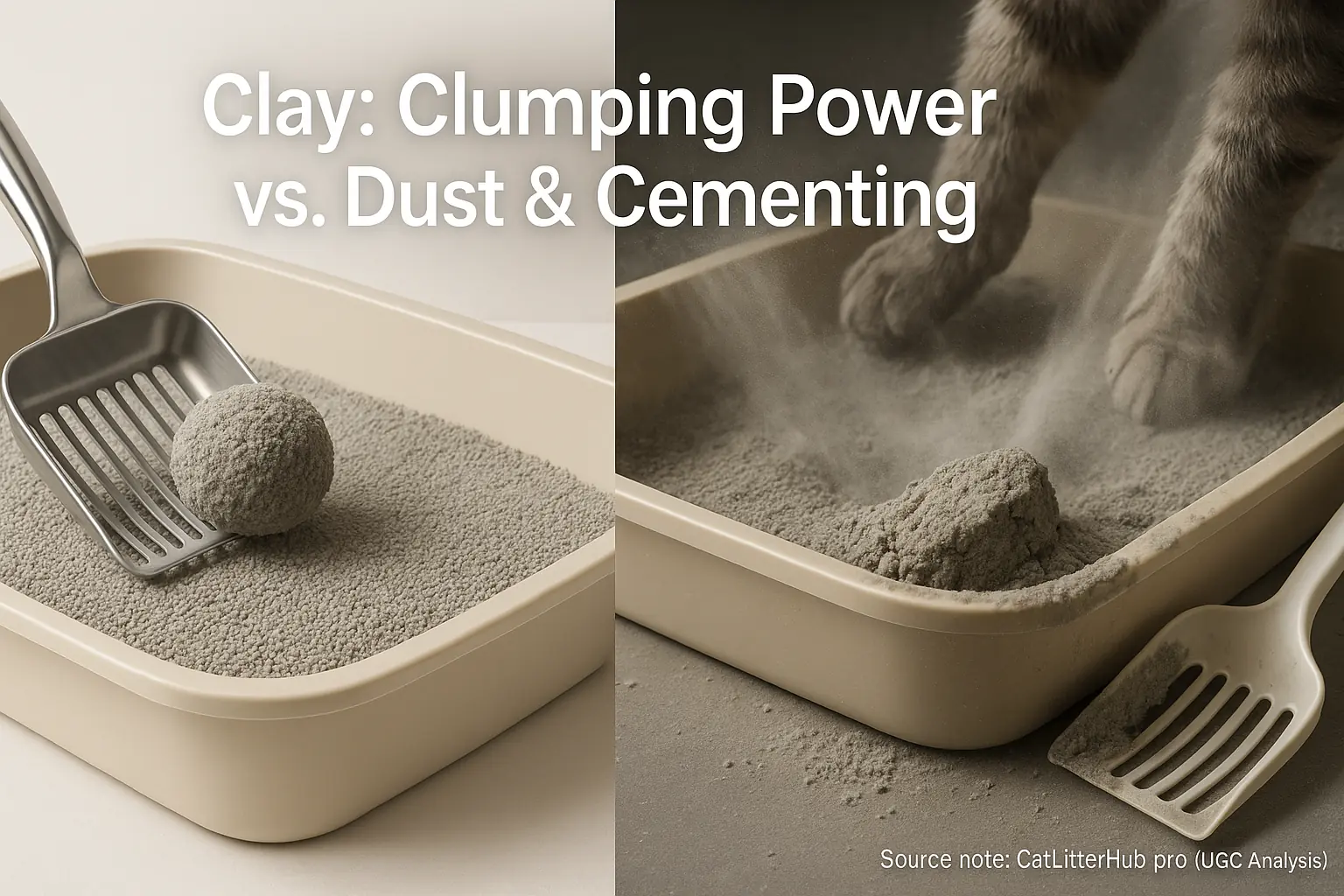
Clay litter. For many, it's the clumping champion. Users rave about those rock-solid clumps. Scooping feels almost effortless. Almost. Not all clays perform equally; some owners find certain brands turn into a sticky nightmare, not perfect scoops.
Then there's the dust. Oh, the dust. That persistent, fine grey film settles everywhere. Many owners, especially those with sensitive cats or household allergies, report it's a constant battle. Even supposedly 'low-dust' formulas draw significant complaints from users about lingering airborne particles.
And let's not forget 'litter-crete'. This is the dreaded layer of clay fused hard to the litter box bottom. Users detail struggles. Broken scoops. Back-breaking chiseling becomes a common chore. Those tiny clay granules also love hitchhiking on paws, tracking unwelcome trails through the house.
So, is clay right for you? The collective experience of cat parents, synthesized from thousands of reviews, points to a distinct trade-off. You often get great clumping. The cost? Dust, cementing, and tracking. If you're wrestling with clay litter cementing, our deep dive into common clay cementing problems and user-found solutions might just save your sanity.
Silica Gel (Crystal) Litter: Odor Assassin or Paw-Irritating Tracker? User Perspectives
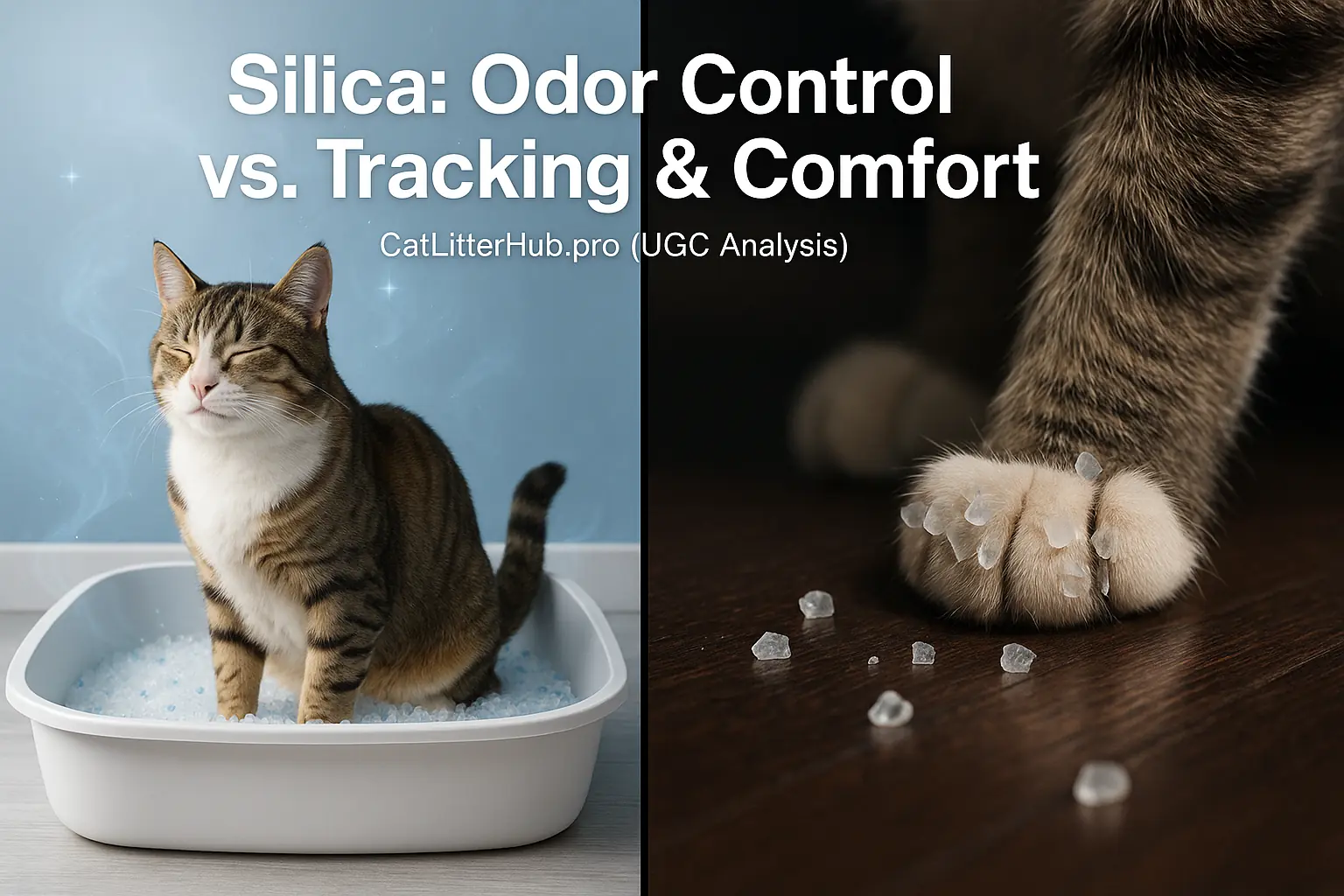
Silica gel litter, frequently called 'crystal' litter by owners, earns praise from many as an odor-control champion. "It just absorbs everything!" echoes through countless user reviews. Some cat parents describe surprisingly odor-free multi-cat households. This outcome is a direct result of silica's absorbency. Effective odor neutralization is its primary user-reported benefit.
That powerful odor control sometimes involves a trade-off. While some silica gel litters are indeed low-dust, users frequently report a different problem. Those small crystals track. Everywhere. Owners recount finding them in bedding, on furniture, far from the litter pan. And for some cats? User experiences suggest those crystals can feel like sharp shards under sensitive paws. This discomfort, reported in numerous owner accounts, can lead to outright litter box refusal. Paw irritation is a significant, often overlooked, downside.
Silica gel litter often promises extended use. Fewer full box changes are a key selling point for manufacturers. But does it truly last long enough to justify a typically higher price? User opinions diverge sharply on this. Some cat owners report genuine long-lasting performance, making it cost-effective. Many others, however, describe needing to replace it more frequently than anticipated, questioning its overall value. The perceived longevity remains a point of contention within the community.
Silica gel presents a complex choice for cat owners. It can be an odor superhero for many households. However, widespread user reports highlight significant tracking issues. Paw comfort also emerges as a critical factor from community feedback. Is your cat hesitant with crystal litter? Our detailed analysis, The Sharp Truths About Crystal Litter: When Cats Say 'No Thanks', explores these user-observed sensitivities further. The decision requires careful consideration of these user-reported pros and cons.
Wood Litter (Pellets & Crumbles): Eco-Warrior or Sawdust Bomb? The User Verdict
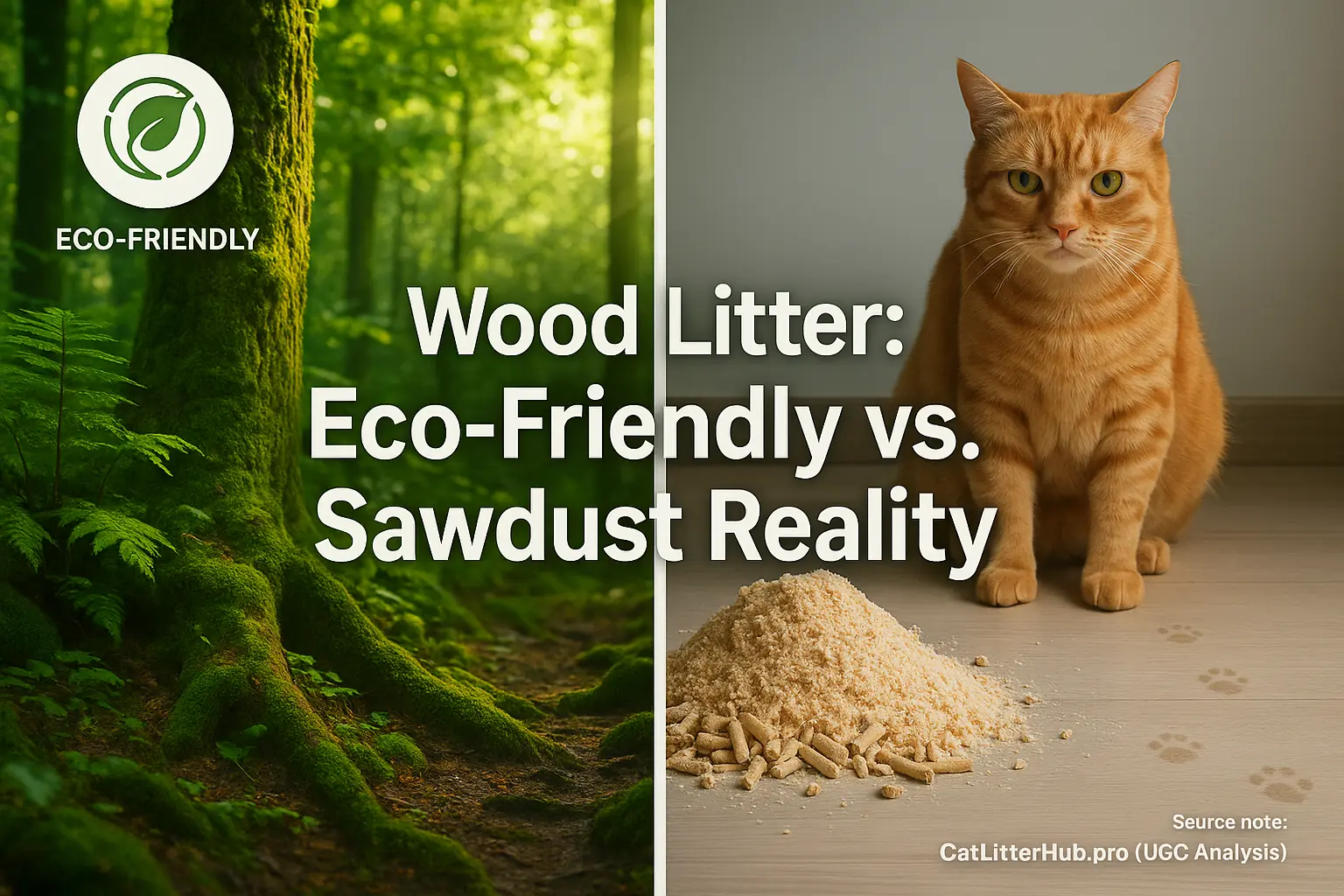
Wood litter often appeals to the eco-conscious owner. Biodegradable. Natural scent. What's not to love? Users frequently pick it for that 'green' halo. Our analysis of user reviews confirms this initial attraction strongly. Many cat owners express satisfaction using a renewable resource. They seek a lighter environmental paw-print.
But those neat wood pellets present challenges. They don't always stay neat. Countless users report a frustrating transformation from clean pellets to a dusty mess. Pellets quickly break down into fine sawdust. This breakdown frequently means more dust than anticipated by owners. And that initial fresh pine or cedar scent? It changes. Often dramatically. Some owners find it morphs, once wet and broken down, into a damp, woody, or even ammonia-like smell. The fresh forest dream can become a musty box reality for some.
Sawdust tracks differently than clay. It does track, according to many user experiences. Fine particles cling to paws and fur, then spread through homes. Then there's cat acceptance. Not all cats are fans of the pellet texture underfoot. Some felines simply refuse these larger, harder pieces. Transitioning requires patience. Users frequently mention this challenge.
Wood litter offers clear planetary benefits. But user experiences reveal a mixed bag. Dust. Tracking. Long-term odor control. These are common pain points found in feedback. If you've noticed that 'sawdust stink', our investigation into explores why.
Plant-Based Litters (Corn, Wheat, Tofu, etc.): Natural Wonders or Bug/Mold Magnets? User Discoveries
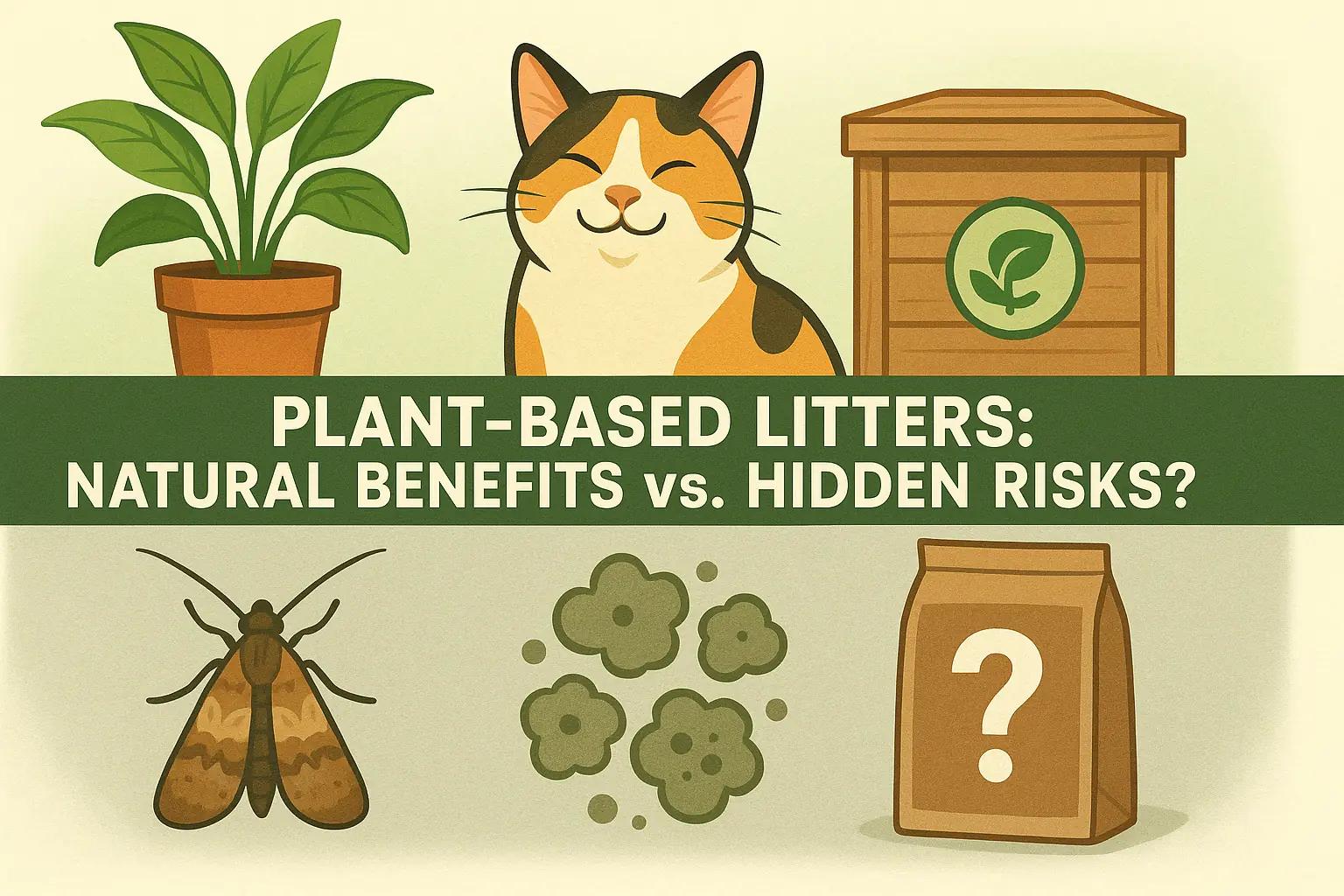
Plant-based litters sound appealing. Corn, wheat, tofu, grass, paper, walnut shells. These materials often promise eco-friendly, cat-safe solutions. Many cat owners choose them for these very benefits. Our analysis of user feedback confirms this initial attraction.
The "plant-based" label covers a vast range. User experiences then vary dramatically. Some litters clump exceptionally well. Others disappoint. Here's a truth manufacturers rarely highlight: certain plant-based litters, like corn and wheat, can become bug magnets. Imagine opening your litter bag to find pantry moths. This is a real shock for many owners. Plus, frustrated users report mold growth with some types, especially with improper storage.
Users share specific material insights. Tofu litter often means low tracking. Yet, some owners find mold in tofu products. Walnut shell litters earn praise for odor control from many. But other users warn about dark staining on paws or floors. These details matter.
The plant-based litter world shows real diversity. Cat Litter Hub's data emphasizes careful research. Owners must weigh specific material pros against cons, drawing from actual user accounts. The 'sweet smell' of corn litter () sometimes masks underlying problems. Tofu's potential dark secret often involves , a discovery for too many users.
Material Matters: Making Your Informed Litter Choice Based on Real User Wisdom
So, what is the absolute 'best' cat litter material? User experiences provide a clear answer. It truly depends. Your individual cat's preferences are paramount. Your specific home environment plays a role. Your own priorities will significantly guide your choice. One owner praises clay for its clumping. Another finds wood pellets ideal for their sensitive feline.
The real key is looking past the advertising. You should listen to the collective wisdom. Thousands of cat owners share their honest experiences. They have faced these same challenges. They know what works. Our biggest tip? Experiment, but do it slowly. Always start your journey armed with genuine user insights. Marketing claims often fall short of real-world performance.
Ready to explore specific brands? Need to solve a tricky litter box problem? Visit our Hub Litter Truths page. It contains more user-driven investigations. You can also explore our Cat Litter Brands section. This area offers detailed analyses based on community feedback.
Related Insight: Pine & Cedar Resins in Wood Litter: Natural Scent or Cat Allergen? (UGC Sensitivity Reports)
Wood litters often appeal to owners seeking natural options. Many users praise their eco-friendly aspects. Yet, a subtle concern surfaces in feedback regarding pine and cedar varieties.
These woods contain natural aromatic oils, or resins. A segment of cat owners reports unexpected sensitivities in their pets. Pinpointing these potential wood resin reactions proves challenging for many. User experiences, however, provide clear pointers for our upcoming analysis on this exact topic.

